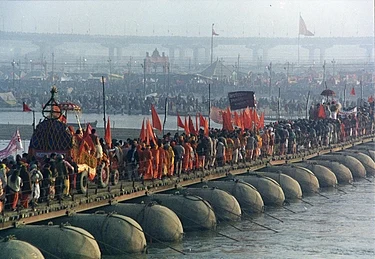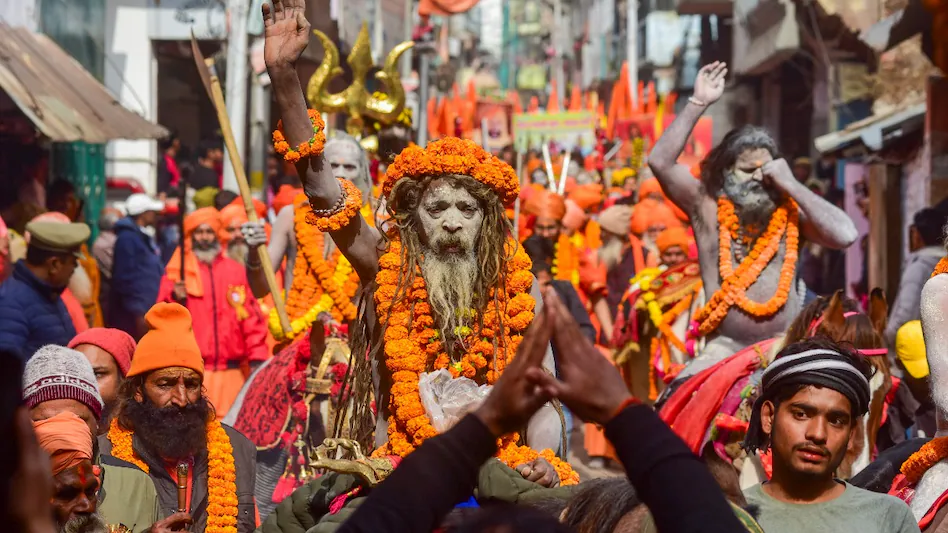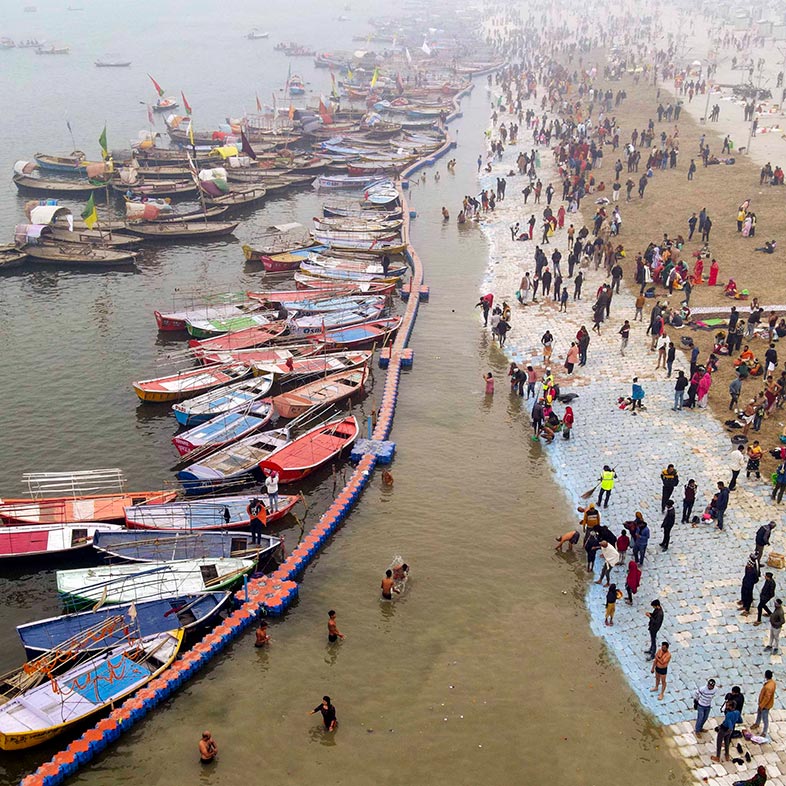
Maha Kumbh Mela 2025: A Sacred Journey of Faith and Spiritual Liberation
The Maha Kumbh Mela 2025 is set to be an extraordinary event, drawing millions of devotees and pilgrims to Prayagraj, where the Ganga, Yamuna, and the mythical Saraswati rivers converge at the Triveni Sangam. It is one of the most anticipated spiritual gatherings in the world, not only because of its cultural significance but also due to its celestial importance. The Mahakumbh is held once every 12 years, but this year, the event carries a special astrological alignment. After 144 years, this specific celestial combination will occur, making the 2025 Mahakumbh a once-in-a-lifetime experience for all who attend.
The festival will begin on January 13, 2025, with the Poush Purnima, and conclude on February 26, 2025, marking Maha Shivaratri. The 2025 edition of the Mahakumbh promises to be an unmissable event, combining ancient rituals, spiritual teachings, and collective faith in a divine atmosphere.
The Spiritual Significance of the Maha Kumbh Mela
The Maha kumbh Mela is more than just a religious gathering—it’s a celebration of life, faith, and the eternal quest for spiritual liberation (moksha). The core of the Mahakumbh is the sacred bath in the waters of the Triveni Sangam, where pilgrims believe they can cleanse themselves of all sins and purify their souls. It’s based on the belief that the confluence of these sacred rivers is a place of great spiritual power, and taking a dip in these waters during the Mahakumbh Mela is believed to bring immense spiritual benefits.
Moreover, the event is linked to the cosmic amrit (elixir) that is said to have been churned from the ocean during the Samudra Manthan, bringing immortality and purification to those who partake in it. This celestial event, where the waters of the Sangam are said to hold the power to absolve one’s sins, is deeply ingrained in Hindu tradition and holds immense significance for millions of devotees.
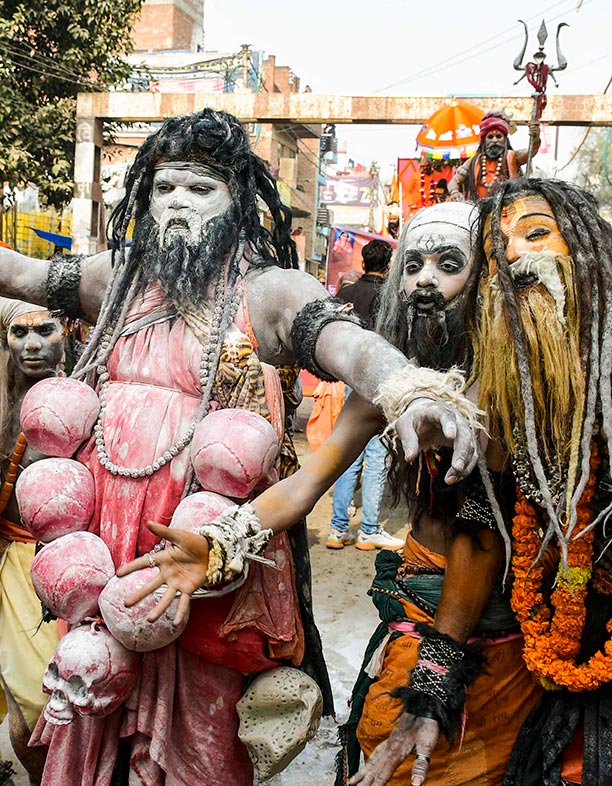
The Celestial Alignment and Its Importance
The year 2025 is special for the Maha Kumbh because, after 144 years, the unique celestial combination that governs this event will align once again. This rare alignment is believed to enhance the power and significance of the spiritual practices during the Mahakumbh. The confluence of the Ganga, Yamuna, and Saraswati at Prayagraj, combined with this rare cosmic event, makes the 2025 Maha kumbh Mela an extraordinary occasion. Pilgrims from across the world will gather to take part in the sacred rituals, seeking blessings for both material and spiritual fulfillment.
The Sacred Rituals of the Maha kumbh Mela
The Mahakumbh Mela is renowned for its elaborate rituals, each of which holds deep spiritual meaning and significance. Let’s delve into some of the most important rituals that form the heart of this festival.
1. The Holy Dip (Snan) at Triveni Sangam
The most iconic and revered ritual of the Maha kumbh Mela is the holy dip in the Triveni Sangam, the confluence of the Ganga, Yamuna, and Saraswati rivers. Pilgrims believe that immersing themselves in the sacred waters during the Mahakumbh helps wash away their sins and purify their souls. The dip is not only physical but also a deeply spiritual act. It is an opportunity for devotees to shed their worldly attachments and immerse themselves in the divine presence.
The most important dates for the holy bath in 2025 are as follows:
- Poush Purnima: January 13, 2025
- Makar Sankranti: January 14, 2025
- Mouni Amavasya: January 29, 2025
- Basant Panchami: February 3, 2025
- Maghi Purnima: February 12, 2025
- Maha Shivaratri: February 26, 2025
These dates hold special significance, and pilgrims believe that a bath on these days offers unique spiritual benefits, purifying the mind, body, and soul.
2. Shahi Snan (Royal Bath)
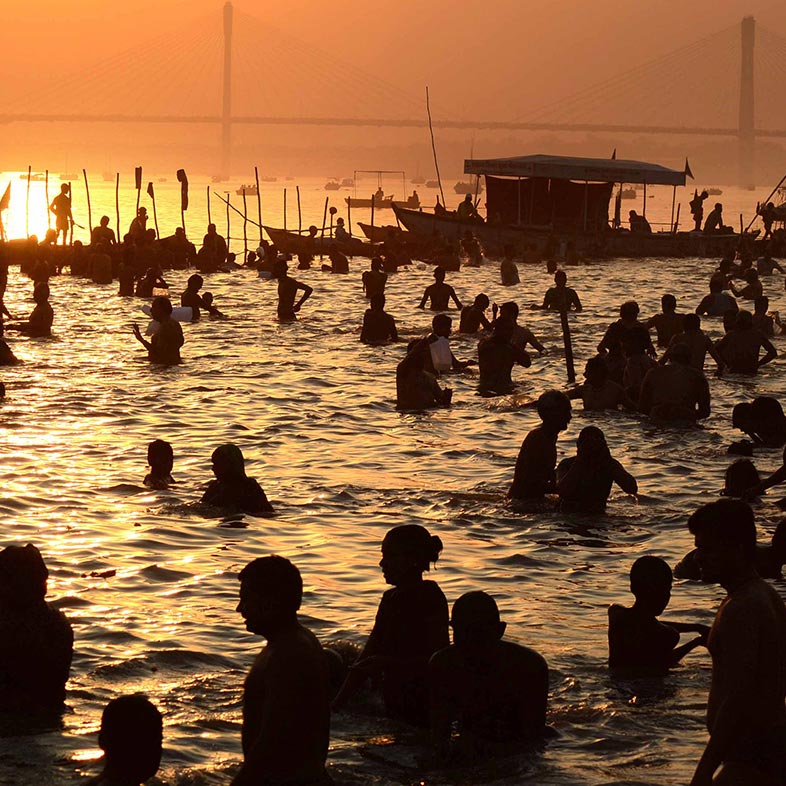
The Shahi Snan is one of the most significant and awe-inspiring events of the Mahakumbh Mela. During this grand ceremony, saints and ascetics from various akharas (spiritual orders) take the royal bath, often in a procession that draws massive crowds. This event marks the beginning of the Mahakumbh and symbolizes the power of devotion and spiritual purity. The Shahi Snan is more than just a bath—it is an affirmation of one’s connection to the divine, marking the start of a journey toward spiritual awakening.
3. Akhadas and Spiritual Processions
The Maha kumbh Mela features the spectacular processions of the akhadas, which are spiritual orders made up of ascetics and sadhus (holy men). These processions, often led by revered saints, make their way to the banks of the Sangam for the royal bath. These processions are accompanied by traditional chanting, music, and displays of devotion, creating a colorful and spiritually charged atmosphere. The participants in these processions represent various philosophies and traditions, bringing together a diverse array of spiritual practices in one place.
4. Yajnas (Sacred Fire Rituals)
During the Maha Kumbh Mela, yajnas, or sacred fire rituals are held to purify the environment and bring blessings to the world. These rituals involve the chanting of Vedic mantras while offerings are made to the fire, symbolizing the release of negative energies and the promotion of positive spiritual growth. Yajnas are a significant part of Hindu spiritual practice and are believed to ensure prosperity, peace, and protection for those who participate.
5. Satsangs and Spiritual Discourses
Apart from the physical rituals, the Mahakumbh also offers an opportunity for spiritual learning through satsangs (spiritual gatherings) and pravachans (religious discourses). Saints and spiritual leaders from around the world come together to share their wisdom on sacred texts, Hindu philosophy, and the nature of the divine. These spiritual teachings provide a deeper understanding of life, karma, and moksha, guiding devotees on their spiritual journey.
The Cultural Vibrance of Mahakumbh Mela
While the Maha kumbh Mela is primarily a religious event, it also celebrates the vibrant cultural heritage of India. Throughout the duration of the festival, there are various cultural performances, including classical music, dance, and art exhibitions. Pilgrims and visitors alike can immerse themselves in the rich traditions of India, enjoying performances that showcase the diversity of India’s cultural heritage. These cultural expressions bring together people from different backgrounds, creating a harmonious and celebratory environment.
Role of Uttar Pradesh Government and MyGov in Mahakumbh 2025
In 2025, the Uttar Pradesh Government, in collaboration with MyGov, will host numerous activities and programs to ensure the smooth functioning of the event and to encourage citizen participation. Volunteers, devotees, and visitors can engage in cultural programs, spiritual activities, and help with organizing the event. The government’s efforts aim to preserve the sanctity of the festival while promoting public engagement and creating a safe and enriching experience for all attendees.
Conclusion: A Divine Experience Like No Other
The Maha Kumbh Mela 2025 in Prayagraj is not just a festival; it’s a divine journey of self-discovery, purification, and spiritual awakening. The combination of celestial alignment, sacred rituals, and vibrant cultural celebrations makes this Mahakumbh a truly extraordinary event. For millions of devotees, it is a once-in-a-lifetime opportunity to cleanse the soul, seek blessings, and deepen their spiritual practice.
Whether you are a pilgrim looking for spiritual solace or a visitor curious to experience one of the largest religious festivals in the world, the Mahakumbh Mela 2025 promises to be an experience like no other—one that will touch your soul and leave you with memories of devotion, unity, and divine connection.
Indian Temple: Maha Kumbh Mela
Source: Maha Kumbh Mela
